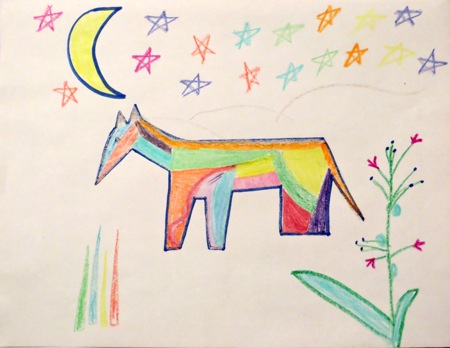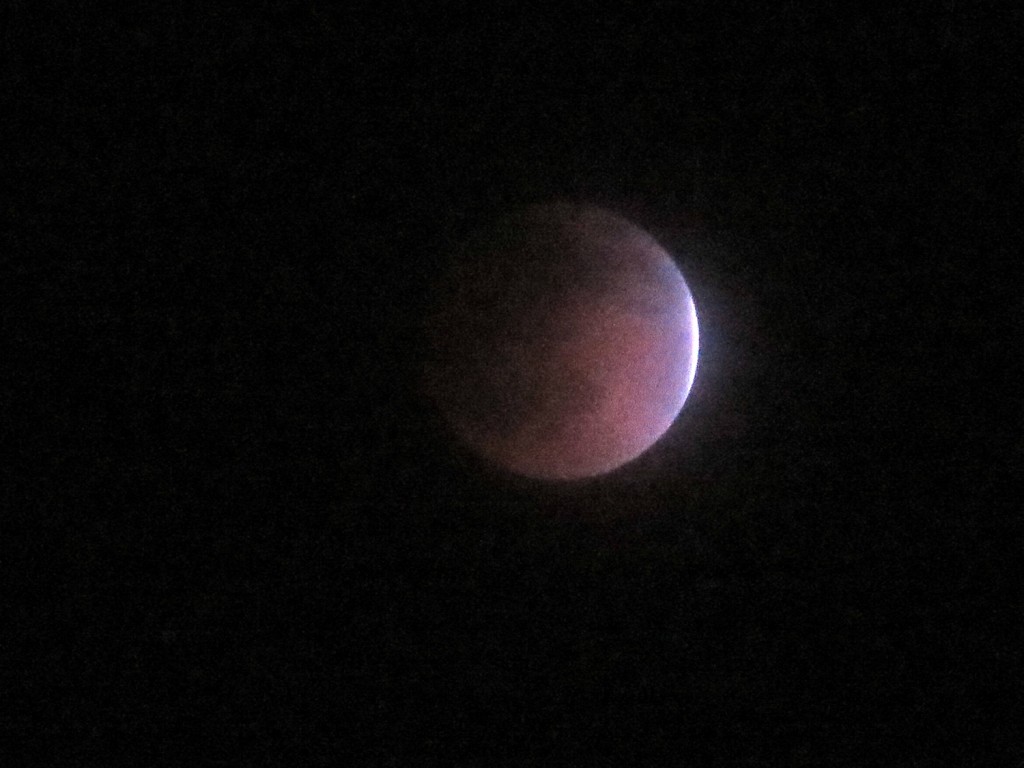2. The Second World
Because of the strife in the First World, First Man, First Woman, the Great-Coyote-Who-Was-Formed-in-the-Water, and the Coyote called First Angry, followed by all the others, climbed up from the First World, the World of Darkness and Dampness, to the Second World, Ni’hodotl’ish, or the Blue World.
When they came to the Second World, they found a number of people already living there: Bluebirds, Blue Hawks, Blue Jays, Blue Herons, and all the blue-feathered beings.
The powerful Swallow People lived there also, and these people made the Second World unpleasant for those who had come from the First World. There was fighting and killing.
The First Four found an opening in the World of Blue Haze; and they climbed through this and led the people up into the Third or Yellow World.

Above: Illustration of First Angry Coyote, drawn by a child in the UUCPA Sunday school after seeing images of Navajo rugs and sand paintings.
3. Arriving in the Third World
The Bluebird was the first to reach the Third or Yellow World. After him came the First Four and all the others.
A great river crossed this land from north to south. It was the Female River.
There was another river crossing it from east to West, it was the Male River. This Male River flowed through the Female River and on; and the name of this place is Tqo alna’osdli, the Crossing of the Waters. Continue reading “Diné bahané, part two”


